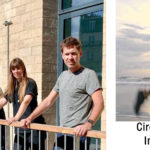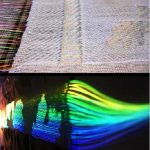F. CLEMENS1, B. KOLL(1), T. GRAULE(1), T. WATRAS(1), (2), M. BINKOWSKI(2)
(1)Empa, Swiss Federal Laboratories for Materials Science & Technology, Dübendorf, Switzerland;
(2)University of Silesia, Faculty of Computer and Materials Science, Poland
The piezoresistive fibre consists of high elastic polymeric matrix and conductive particles, which are homogeneously dispersed inside the
matrix.
By raw material evaluation (e.g. elastic polymer, conductive particles) fibre properties are investigated considering the project relevant sensor characteristics: change in electrical resistance by dynamic, static and cyclic strain.
Textile piezoresistive sensor fibres with tailored electrical response leading to defined strain rates could be developed.
As conductive filler two kinds of carbon black, a higher and a lower structured type (Ensaco 250 and 350) were tested successfully. Sample with graphite powder (Timrex HSAG300) reduced the flexibility of the fibres in an unacceptable way and was not further investigated. Additionally the relaxation of the electrical signal under static load was higher than the one of the carbon black compounds.
By torque rheometer and DMA analysis it could be verified, that interaction between the different polymers and the carbon black fillers significantly chance. This could be correlated with the sensor behaviour.
Therefore the interaction between the both materials should be not too strong and not too weak to achieve good sensing behavior. Selected piezoresisitive fibres were successfully integrated into two different demonstrators: into an industrially woven elastic band for tensile measurement and into a none
woven matrix sensor for compression measurements.
The sensor behaviour in tensile mode for single fibres and woven textile was comparable. With the pressure sensor device, the position of penetration and the amount of deformation can be investigated.
Back to the Abstracts of the
4th Intl Conference “Smart Materials, Structures and Systems”





